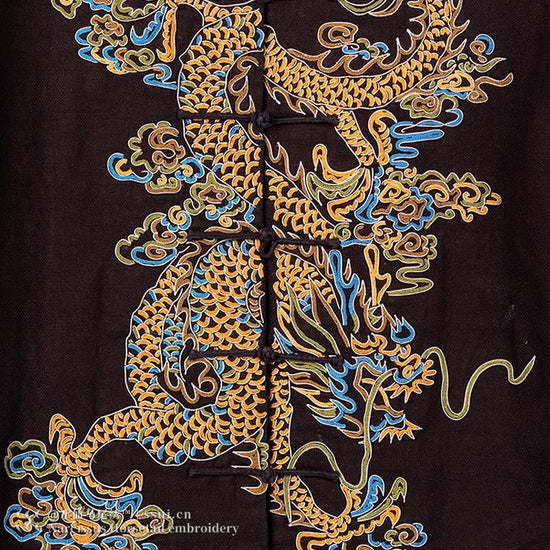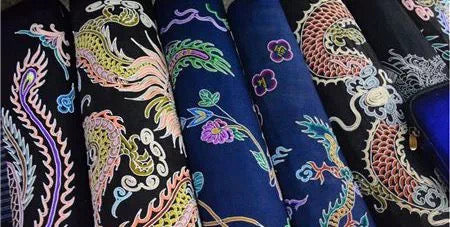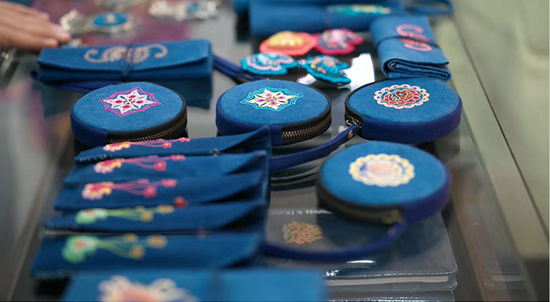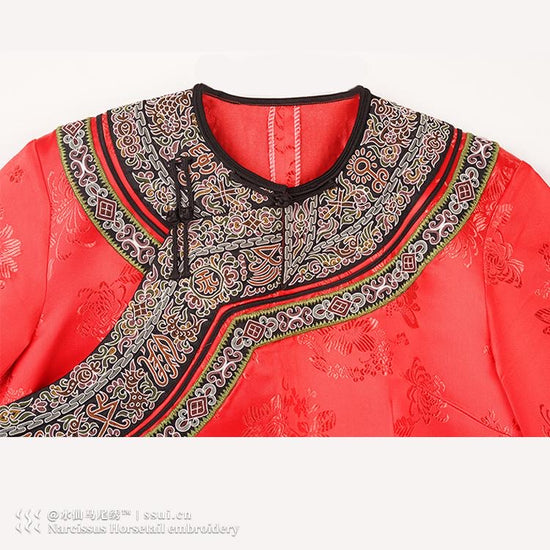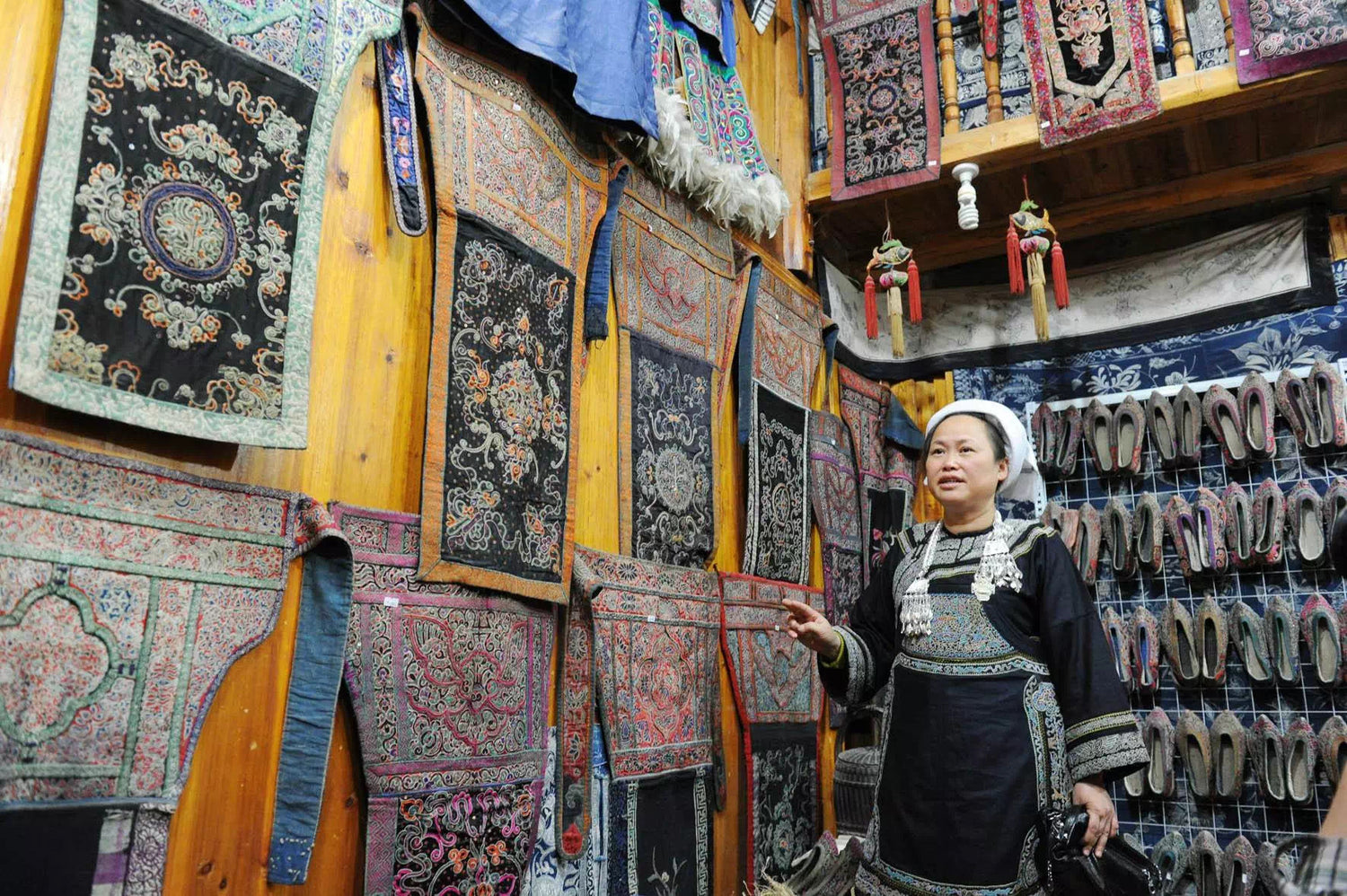
Horsetail embroidery used to be a skill that practiced by Shui women from their young age. However, Song Shuixian found more and more of them leaving home to find jobs in the big cities while barely any women do the embroidery skill anymore. To prevent the traditional embroidery culture and craft skills from disappearing, Song started to buy the old pieces from the local villagers and do it almost for 20 years. Then the government supports her to set up a museum to display all the collects to the public. In this way, she can popularize the heritage of the horsetail embroidery handicraft and the culture of the Sui Minority.
Song was the first craftswoman to apply the horsetail embroidery on the garment. In the past, the embroidery only appeared on small garments such as baby straps and aprons. She always try to use different initiatives to commercialize the handicraft that accessible to the market. She knows this is best way to preserve the ethnic minority’s culture.
Some of her masterpieces

Song currently runs a local shop to sell handmade products to support the development of traditional handicrafts. Meanwhile, She trains the local women and engages them together for the sewing work that allows them to both make an income to support their families.
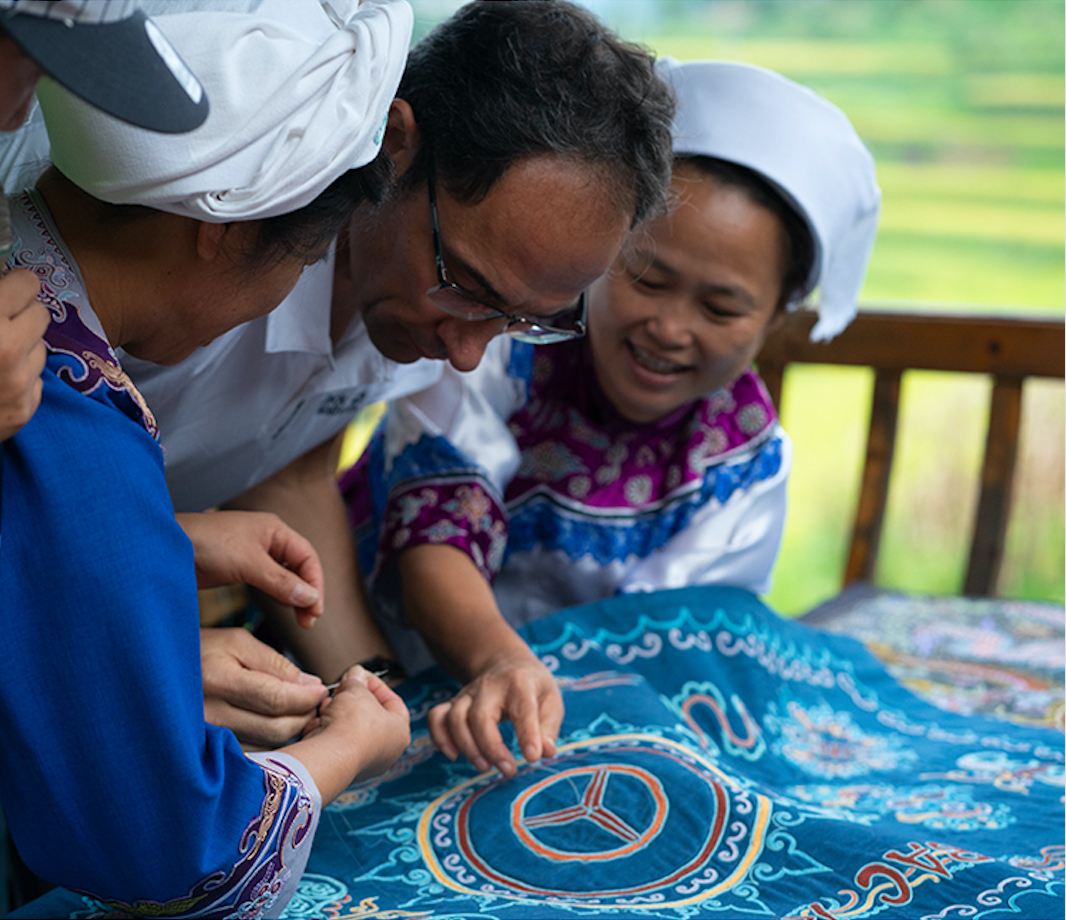
She has done much so far but still worries about the heritage of the handicraft. Attracting the younger generation to continue to practice this craft skill is challenging. They prefer to move to big cities to make money or study rather than engage in the time-consuming craft. "It is vital that we protect this important traditional folk handicraft. Otherwise, it may become extinct." She told People's Daily Online.
-
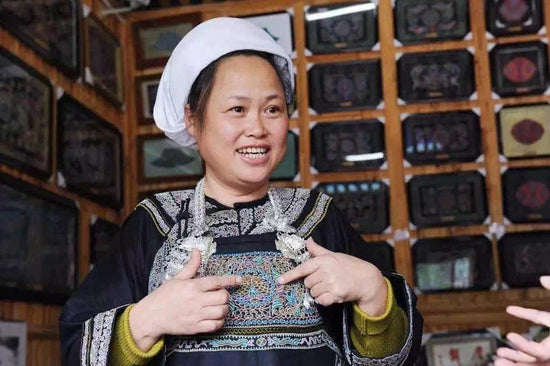
“Transmission requires perseverance from generation to generation. This epidemic also seems to tell us to live slower, don’t be greedy for utilitarianism, slow down to feel harmony with nature. “
